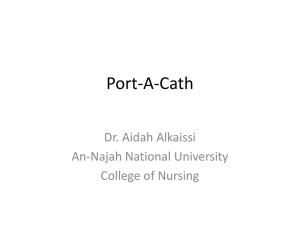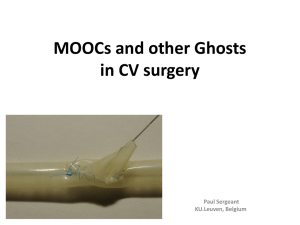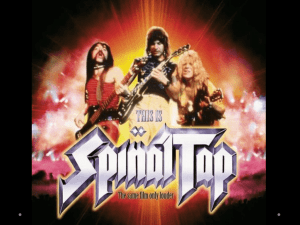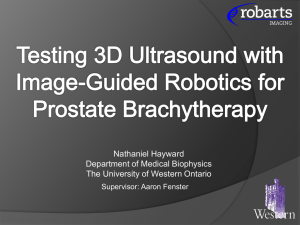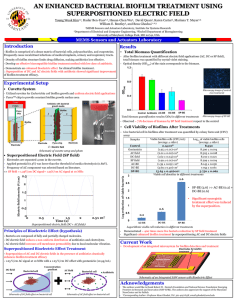CIPOSTER - University of Florida
advertisement
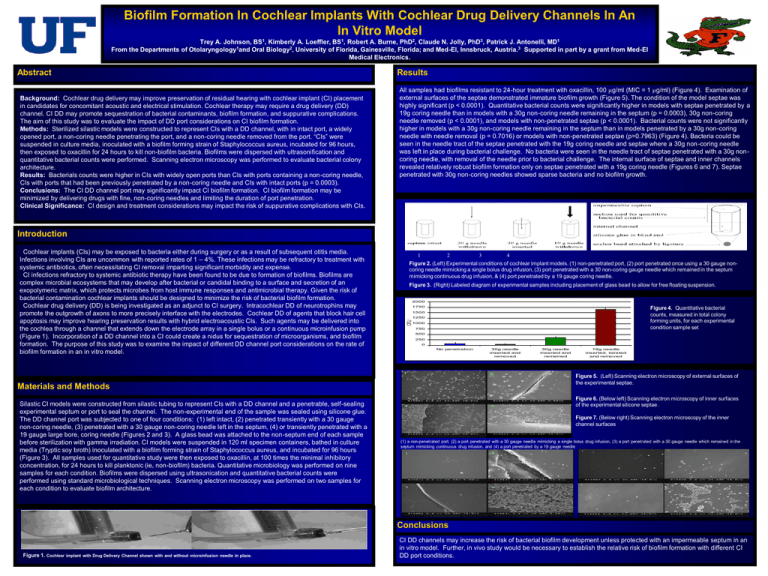
Biofilm Formation In Cochlear Implants With Cochlear Drug Delivery Channels In An In Vitro Model Trey A. Johnson, BS1, Kimberly A. Loeffler, BS1, Robert A. Burne, PhD2, Claude N. Jolly, PhD3, Patrick J. Antonelli, MD1 From the Departments of Otolaryngology1and Oral Biology2, University of Florida, Gainesville, Florida; and Med-El, Innsbruck, Austria.3 Supported in part by a grant from Med-El Medical Electronics. Abstract Results Background: Cochlear drug delivery may improve preservation of residual hearing with cochlear implant (CI) placement in candidates for concomitant acoustic and electrical stimulation. Cochlear therapy may require a drug delivery (DD) channel. CI DD may promote sequestration of bacterial contaminants, biofilm formation, and suppurative complications. The aim of this study was to evaluate the impact of DD port considerations on CI biofilm formation. Methods: Sterilized silastic models were constructed to represent CIs with a DD channel, with in intact port, a widely opened port, a non-coring needle penetrating the port, and a non-coring needle removed from the port. “CIs” were suspended in culture media, inoculated with a biofilm forming strain of Staphylococcus aureus, incubated for 96 hours, then exposed to oxacillin for 24 hours to kill non-biofilm bacteria. Biofilms were dispersed with ultrasonification and quantitative bacterial counts were performed. Scanning electron microscopy was performed to evaluate bacterial colony architecture. Results: Bacterials counts were higher in CIs with widely open ports than CIs with ports containing a non-coring needle, CIs with ports that had been previously penetrated by a non-coring needle and CIs with intact ports (p = 0.0003). Conclusions: The CI DD channel port may significantly impact CI biofilm formation. CI biofilm formation may be minimized by delivering drugs with fine, non-coring needles and limiting the duration of port penetration. Clinical Significance: CI design and treatment considerations may impact the risk of suppurative complications with CIs. All samples had biofilms resistant to 24-hour treatment with oxacillin, 100 g/ml (MIC = 1 g/ml) (Figure 4). Examination of external surfaces of the septae demonstrated immature biofilm growth (Figure 5). The condition of the model septae was highly significant (p < 0.0001). Quantitative bacterial counts were significantly higher in models with septae penetrated by a 19g coring needle than in models with a 30g non-coring needle remaining in the septum (p = 0.0003), 30g non-coring needle removed (p < 0.0001), and models with non-penetrated septae (p < 0.0001). Bacterial counts were not significantly higher in models with a 30g non-coring needle remaining in the septum than in models penetrated by a 30g non-coring needle with needle removal (p = 0.7016) or models with non-penetrated septae (p=0.7963) (Figure 4). Bacteria could be seen in the needle tract of the septae penetrated with the 19g coring needle and septae where a 30g non-coring needle was left in place during bacterial challenge. No bacteria were seen in the needle tract of septae penetrated with a 30g noncoring needle, with removal of the needle prior to bacterial challenge. The internal surface of septae and inner channels revealed relatively robust biofilm formation only on septae penetrated with a 19g coring needle (Figures 6 and 7). Septae penetrated with 30g non-coring needles showed sparse bacteria and no biofilm growth. Introduction 1 2 4 Figure 3. (Right) Labeled diagram of experimental samples including placement of glass bead to allow for free floating suspension. 2000 1750 Figure 4. Quantitative bacterial counts, measured in total colony forming units, for each experimental condition sample set 1500 1250 1000 750 500 250 0 No penetration 30g needle inserted and removed 30g needle inserted and remained 19g needle inserted, twisted and removed Figure 5. (Left) Scanning electron microscopy of external surfaces of the experimental septae. Materials and Methods Silastic CI models were constructed from silastic tubing to represent CIs with a DD channel and a penetrable, self-sealing experimental septum or port to seal the channel. The non-experimental end of the sample was sealed using silicone glue. The DD channel port was subjected to one of four conditions: (1) left intact, (2) penetrated transiently with a 30 gauge non-coring needle, (3) penetrated with a 30 gauge non-coring needle left in the septum, (4) or transiently penetrated with a 19 gauge large bore, coring needle (Figures 2 and 3). A glass bead was attached to the non-septum end of each sample before sterilization with gamma irradiation. CI models were suspended in 120 ml specimen containers, bathed in culture media (Tryptic soy broth) inoculated with a biofilm forming strain of Staphylococcus aureus, and incubated for 96 hours (Figure 3). All samples used for quantitative study were then exposed to oxacillin, at 100 times the minimal inhibitory concentration, for 24 hours to kill planktonic (ie, non-biofilm) bacteria. Quantitative microbiology was performed on nine samples for each condition. Biofilms were dispersed using ultrasonication and quantitative bacterial counts were performed using standard microbiological techniques. Scanning electron microscopy was performed on two samples for each condition to evaluate biofilm architecture. 3 Figure 2. (Left) Experimental conditions of cochlear implant models. (1) non-penetrated port, (2) port penetrated once using a 30 gauge noncoring needle mimicking a single bolus drug infusion, (3) port penetrated with a 30 non-coring gauge needle which remained in the septum mimicking continuous drug infusion, & (4) port penetrated by a 19 gauge coring needle. CFU Cochlear implants (CIs) may be exposed to bacteria either during surgery or as a result of subsequent otitis media. Infections involving CIs are uncommon with reported rates of 1 – 4%. These infections may be refractory to treatment with systemic antibiotics, often necessitating CI removal imparting significant morbidity and expense. CI infections refractory to systemic antibiotic therapy have been found to be due to formation of biofilms. Biofilms are complex microbial ecosystems that may develop after bacterial or candidal binding to a surface and secretion of an exopolymeric matrix, which protects microbes from host immune responses and antimicrobial therapy. Given the risk of bacterial contamination cochlear implants should be designed to minimize the risk of bacterial biofilm formation. Cochlear drug delivery (DD) is being investigated as an adjunct to CI surgery. Intracochlear DD of neurotrophins may promote the outgrowth of axons to more precisely interface with the electrodes. Cochlear DD of agents that block hair cell apoptosis may improve hearing preservation results with hybrid electroacoustic CIs. Such agents may be delivered into the cochlea through a channel that extends down the electrode array in a single bolus or a continuous microinfusion pump (Figure 1). Incorporation of a DD channel into a CI could create a nidus for sequestration of microorganisms, and biofilm formation. The purpose of this study was to examine the impact of different DD channel port considerations on the rate of biofilm formation in an in vitro model. Figure 6. (Below left) Scanning electron microscopy of inner surfaces of the experimental silicone septae. Figure 7. (Below right) Scanning electron microscopy of the inner channel surfaces (1) a non-penetrated port, (2) a port penetrated with a 30 gauge needle mimicking a single bolus drug infusion, (3) a port penetrated with a 30 gauge needle which remained in the septum mimicking continuous drug infusion, and (4) a port penetrated by a 19 gauge needle Conclusions Figure 1. Cochlear implant with Drug Delivery Channel shown with and without microinfusion needle in place. CI DD channels may increase the risk of bacterial biofilm development unless protected with an impermeable septum in an in vitro model. Further, in vivo study would be necessary to establish the relative risk of biofilm formation with different CI DD port conditions.


